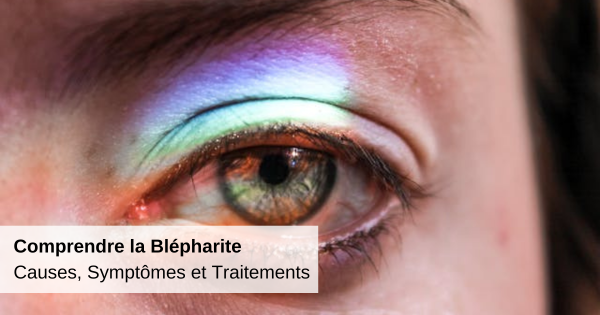Understanding Blepharitis: Causes, Symptoms and Treatment Options

Blepharitis is a common eye condition that causes discomfort and irritation to the eyelids. Often underestimated, this condition can significantly affect the quality of life of those affected. What are the causes, symptoms and different treatment options?
The different types of blepharitis
Blepharitis is mainly divided into two categories: anterior and posterior , depending on its location on the eyelids. Among the anterior blepharitis, we find staphylococcal, which is characterized by inflammation at the base of the eyelashes, often accompanied by crusts and fibrinous deposits. It is more common in women and children. Herpetic blepharitis mainly affects the cornea, one form affects a large number of people each year.
Among posterior blepharitis, a form called "rosacea-associated" is linked to rosacea (skin disease chronic characterized by damage to the small blood vessels of the face) of the eye or skin. Finally, meibomian blepharitis is manifested by blocked sebaceous glands at the edge of the eyelids, making normal secretion difficult.

Causes, symptoms and treatment options
Blepharitis can be caused by a variety of factors , including bacterial or fungal infections, clogged oil glands, underlying skin conditions like rosacea, and also poor eyelid hygiene. The most common symptoms are redness and swelling of the eyelids, excessive secretion of sebum, itching, burning sensations, the appearance of crusts on the eyelashes, excessive tearing.
Treatment of blepharitis aims to relieve symptoms, reduce inflammation and improve eyelid hygiene. Common approaches include:
- Hot compresses: These help open clogged oil glands.
- Gentle eyelid cleansing: To remove crusts and debris.
- Topical antibiotics and steroids: Used to control bacterial infection.
- Oral medications: Prescribed in severe cases.
- Procedures to unblock the sebaceous glands: Carried out by health professionals.
In order to effectively prevent and manage blepharitis, it is essential to maintain good eyelid hygiene. This includes regular cleaning of the eyelids. Avoid excessive use of makeup or harsh eye products and adopt a healthy lifestyle. Regular eye exams can also help detect and manage blepharitis when it first appears.

The question of reimbursement for blepharitis treatments can be crucial for many patients. In general, treatments are covered by basic health insurance, under certain conditions. However, coverage may vary depending on the type of treatment prescribed and the insurer's reimbursement policy. It is recommended to consult your insurer to verify the details of your health plan.
Although blepharitis is often perceived as a minor condition, it represents a notable concern in ophthalmology due to its impact on quality of patients' lives. A thorough understanding of its mechanisms and an individualized therapeutic approach are essential for effective and lasting treatment. By adopting good hygiene practices and following medical advice, people with blepharitis can expect significant relief from their symptoms and improvement in their eye comfort.


